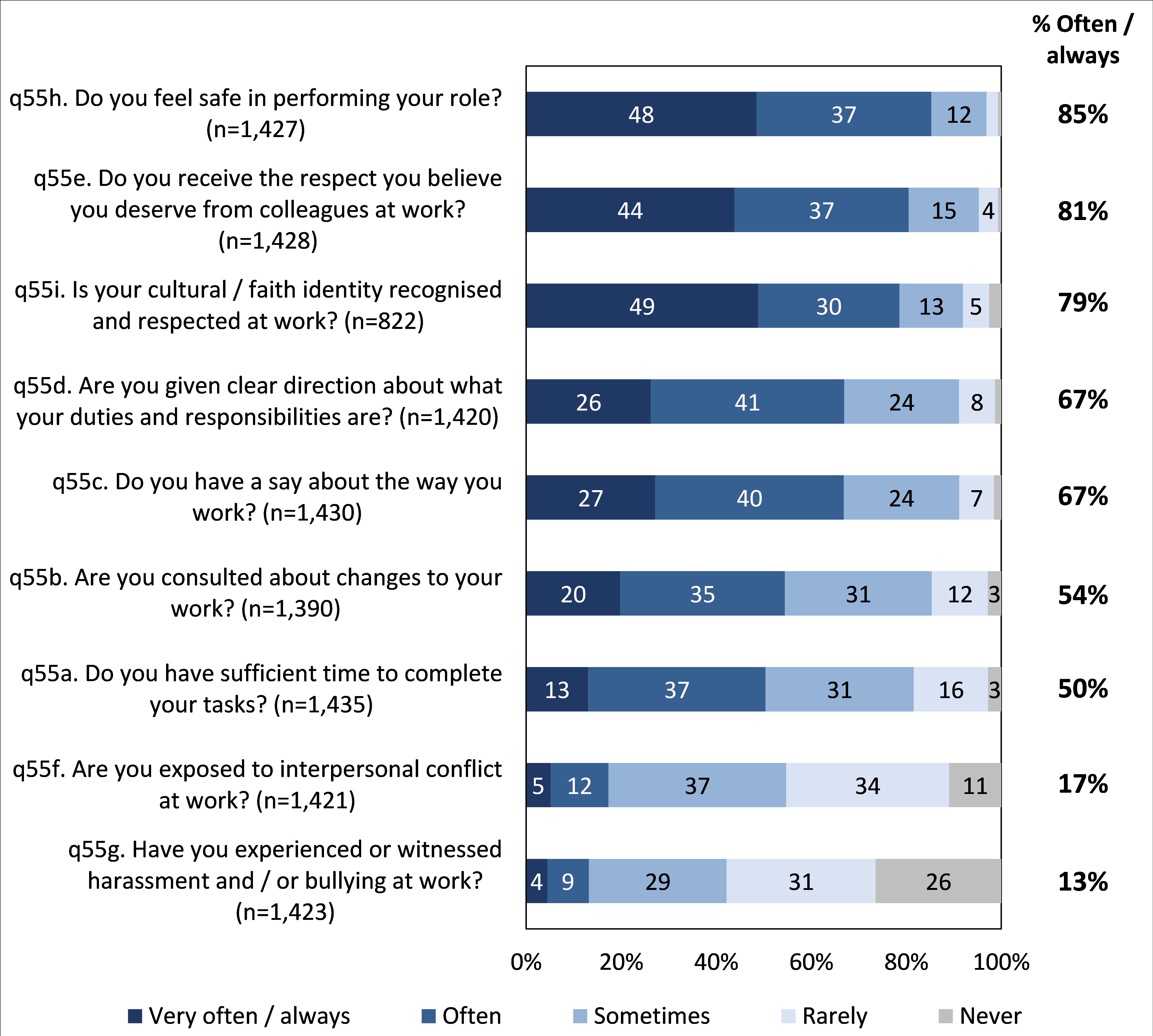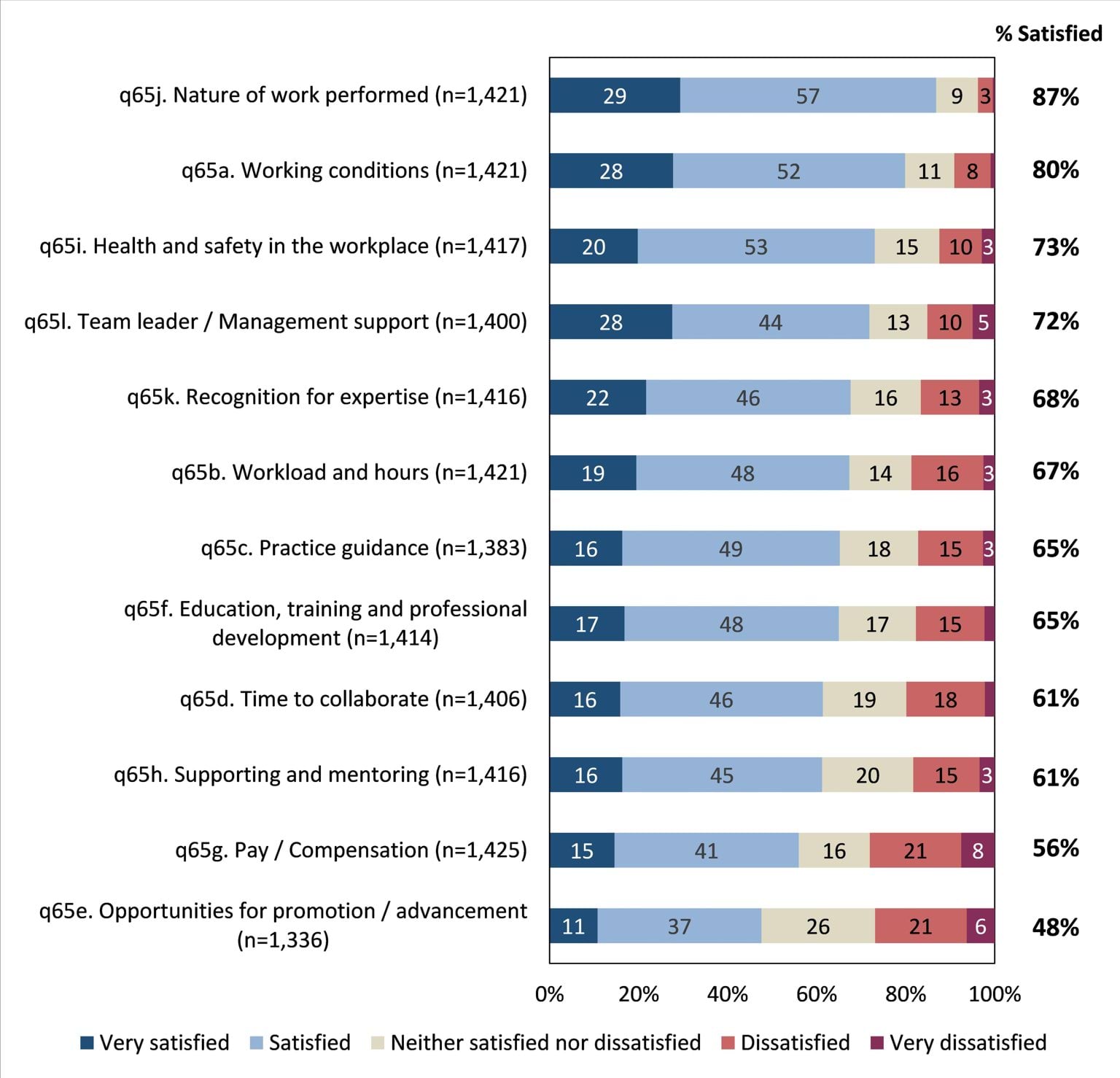Given the various work-related stressors that this group may encounter, this information is important to understand and may be used to assist in identifying any specific areas of focus to inform plans, processes or strategies to support its workers.
Overall, the results suggested that many within this workforce had experienced stress due to high workload, with over three-quarters reporting that they experienced at least moderate stress in their role.
Of this group, many cited a high volume of work or high demands of their role as a primary reason for their stress (84%). Over 2-in-5 also reported that vicarious trauma was a cause of stress for them when undertaking their work.
Positively, around two-thirds of this workforce felt that their work made a significant difference to people affected by family violence. Additionally, most were satisfied in their current role (75%).
Workplace stressors
Support for negative encounters
Satisfaction with role
Suggestions for improvement
Footnotes
- Q56. On average, how would you rate your level of work-related stress? (n=1,443)
- Q57. What is the primary cause(s) of your work-related stress? Multiple responses accepted (n=482)
- Additionally, 18% believed that their organisation did not have such measures in place, and 23% were unsure. Q58. Does your organisation have processes in place or policies and procedures to recognise and manage vicarious trauma? (n=1,436)
- Q59. Overall, how effective are these processes, policies and / or procedures in assisting you to recognise that you are experiencing vicarious trauma? (n=744)
- Q60. Overall, how effective are these processes, policies and / or procedures in assisting you to manage vicarious trauma? (n=731)
Updated



